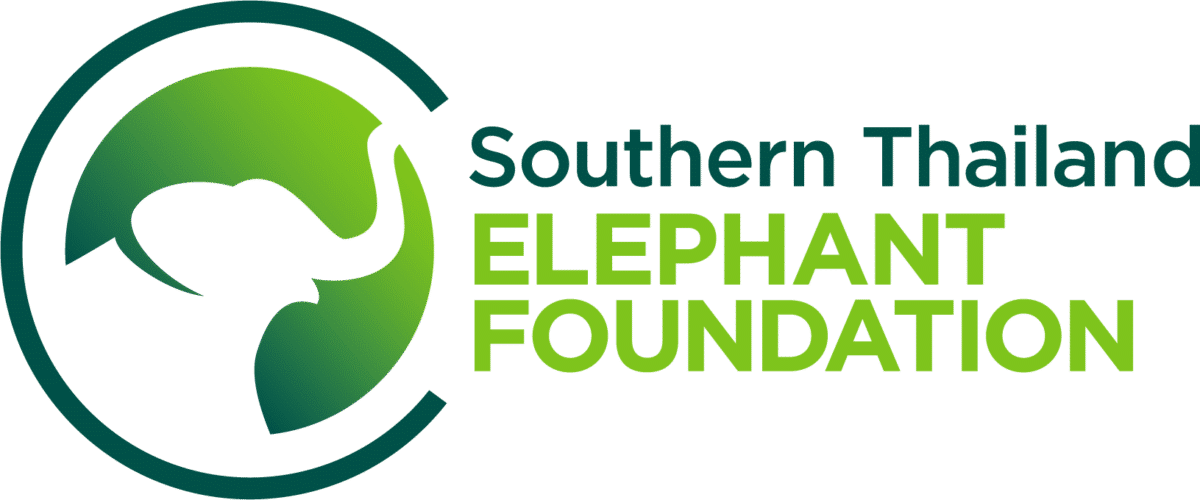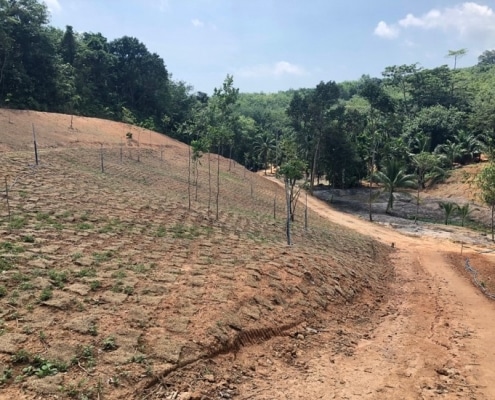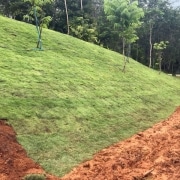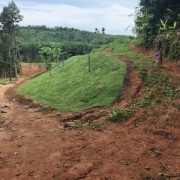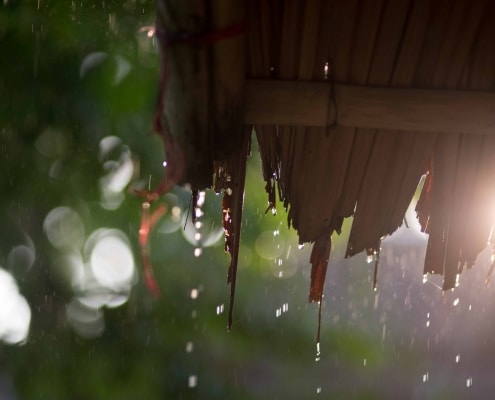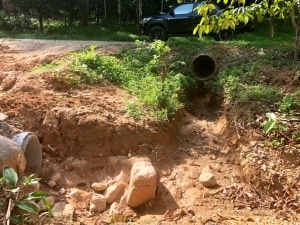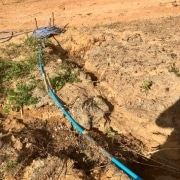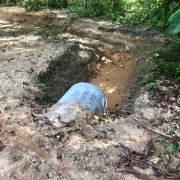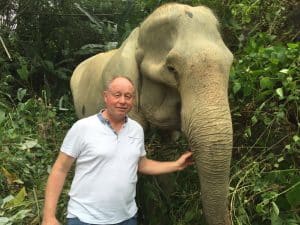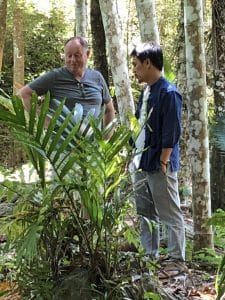

Jake said: “This has been an exciting but challenging project working against the clock to get as much done before the rainy season arrives. The team has done so well clearing all of the rubber trees and, with the help of Lee Sambrook, we have now got a very clear idea of how to lay out the land in an ecofriendly way so it is best suited to our elephants. We have had to change our plans as the work progressed as although the natural pools appear ideal for the elephants to bathe and relax only one of these has proved suitable for elephant use. Fortunately this is the largest and widest, with the best surrounding access for the elephants and will provide an excellent focus for visitors to watch these wonderful animals bathing.”
With Jake able to speak both Thai and English fluently, his regular visits to the site have been invaluable to direct the Thai workers and to ensure each part of the plan’s execution is undertaken correctly and to our ecosensitive specification. One aspect of this has been the planting of the new trees, as well as making sure the soil is prepared and ready for the turf to be laid. One of our labourers has been working on this land for over 40 years, so understands the soil behaviour and the effects of the seasonal weather on the land.
Soon our thoughts must turn to the education and visitor centres, which we plan to 
It’s been great to talk to Jake on site this week, and you can read more about him and his passion for the work of STEF here.
Please do come back next week, to read another blog post on the new site’s progress!
